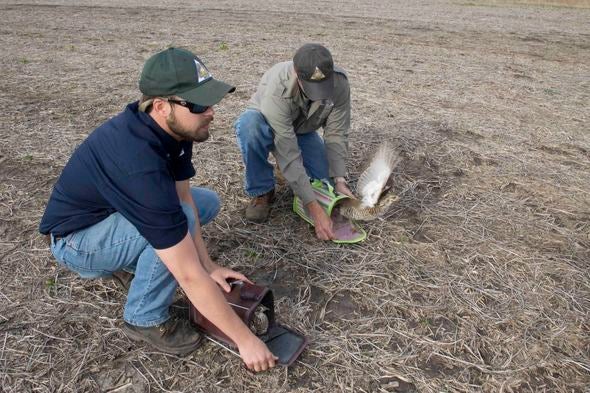
Xplor reconnects kids to nature and helps them find adventure in their own backyard. Free to residents of Missouri.


































Stay in Touch with MDC news, newsletters, events, and manage your subscription

Xplor reconnects kids to nature and helps them find adventure in their own backyard. Free to residents of Missouri.

A monthly publication about conservation in Missouri. Started in 1938, the printed magazine is free to residents of Missouri.


Eagleville, Mo. – A prairie chicken restoration program in northwest Missouri is showing hopeful signs. Biologists are seeing an increase in bird numbers and the number of leks, or booming grounds, prairie chickens are using on or near Dunn Ranch in Harrison County. The uptick comes as the Missouri Department of Conservation (MDC) and partners conclude a five-year program to trap prairie chickens in Kansas and Nebraska and release them at Dunn Ranch or across the nearby state line in Iowa. These iconic grassland birds are endangered in Missouri due to scarce grassland habitat.
Male prairie chickens dance, strut, and spar with one another on leks at daybreak to attract and mate with females. In 2016, MDC biologists counted 47 prairie chickens using seven leks in the Dunn Ranch area. A count on April 7 found 64 birds at nine leks. The increase is encouraging, said Max Alleger, MDC grassland coordinator.
“What is also encouraging is that they’re spreading out,” Alleger said. “We think it’s got to be an indicator of suitable habitat.”
Historically, prairie chickens once numbered in the hundreds of thousands across most of Missouri. But less than one tenth of one percent of the state’s native prairie remains, often in small fragments. As habitat dwindled, so did prairie chicken flocks. Other open, non-native grasslands with nesting, foraging and brood rearing vegetation suitable for prairie chickens are also scarce.
MDC is working on public land and with private landowners in the Grand River Grasslands, a cooperative project between MDC, Iowa Department of Natural Resources, private landowners and other conservation agencies to restore functioning grassland ecology. Iowa’s prairie chicken efforts are focused around the Kellerton Wildlife Management Area, which is just north of The Nature Conservancy’s Dunn Ranch and MDC’s Pawnee Prairie.
This was the fifth and final year of a cooperative prairie chicken translocation project between Missouri, Iowa and the Nebraska Game and Parks Commission. MDC trapped 100 prairie chickens in an area of Nebraska where they are plentiful. Biologists released 60 prairie chickens this spring at Dunn Ranch and 40 at Iowa locations.
Radio transmitters were placed on prairie chicken hens that were released. MDC biologists will track the birds through the year to determine what kind of habitat they prefer and how successful they were in brood rearing.
MDC assists private landowners with habitat projects that can help prairie chickens such as tree removal, establishment of native grasses and forbs, and utilizing bird-friendly grazing systems for cattle. In many cases, grants or cost sharing funds are available for improvements.
The prairie chickens also need some help from the weather. Warm, relatively dry conditions in late spring and early summer help prairie chickens successfully hatch and rear broods.
“It’s about recruitment,” said Kendall Coleman, MDC private land conservationist. “They’ve got to lay eggs and raise chicks. Last year we had a good hatch. We need several of them in a row.”
For information about private land programs in the Grand River Grasslands, contact Coleman at 660-726-3746. Information about MDC assistance statewide for private lands is available at https://mdc.mo.gov/property. For information about prairie chickens in Missouri, visit http://on.mo.gov/2lH0NZQ.